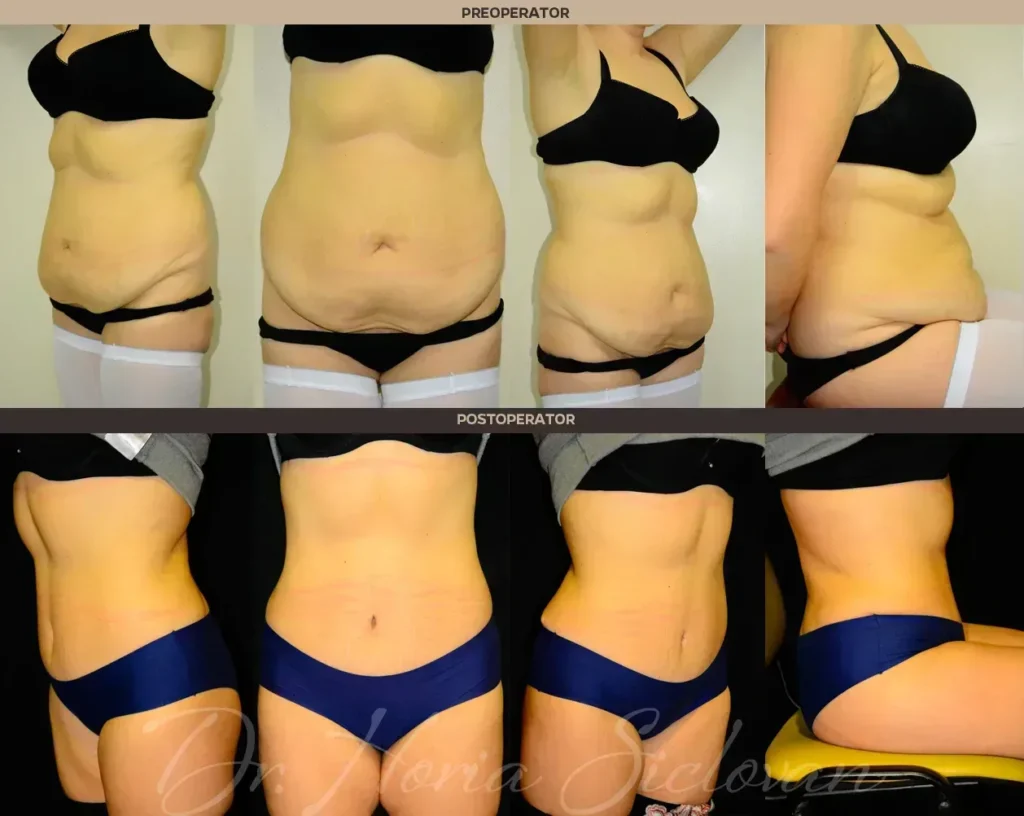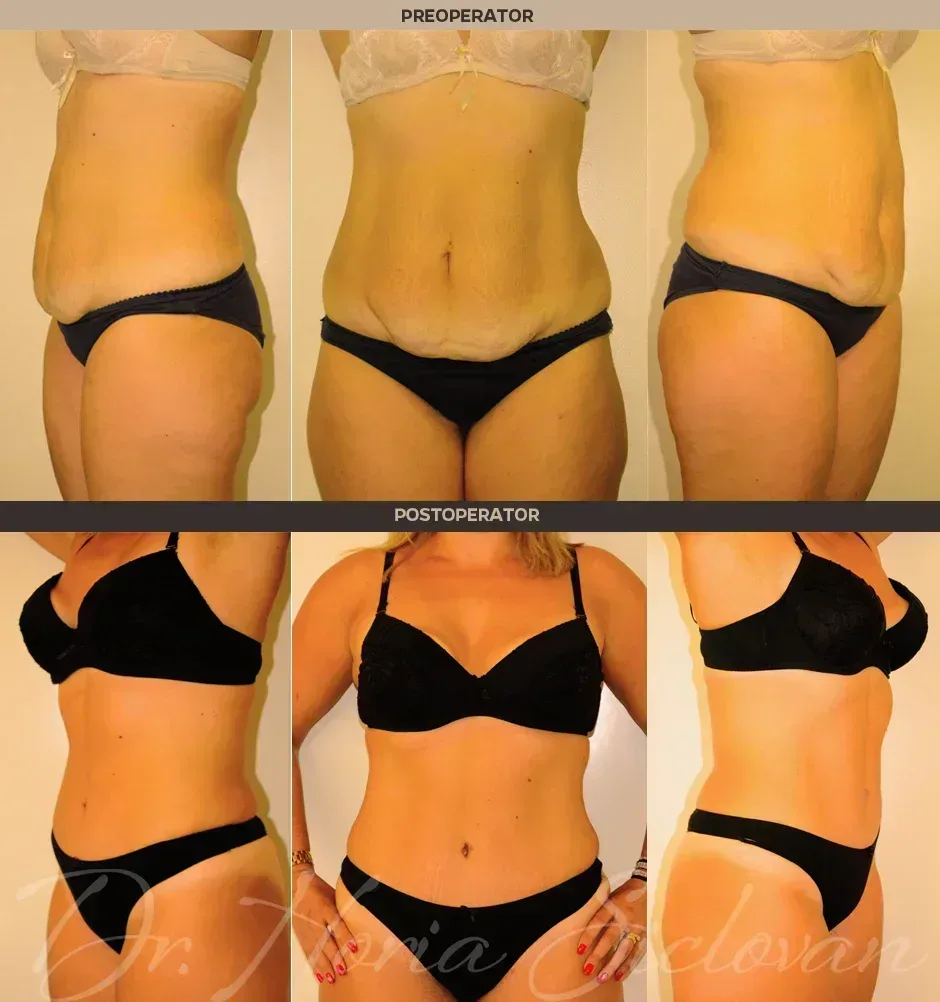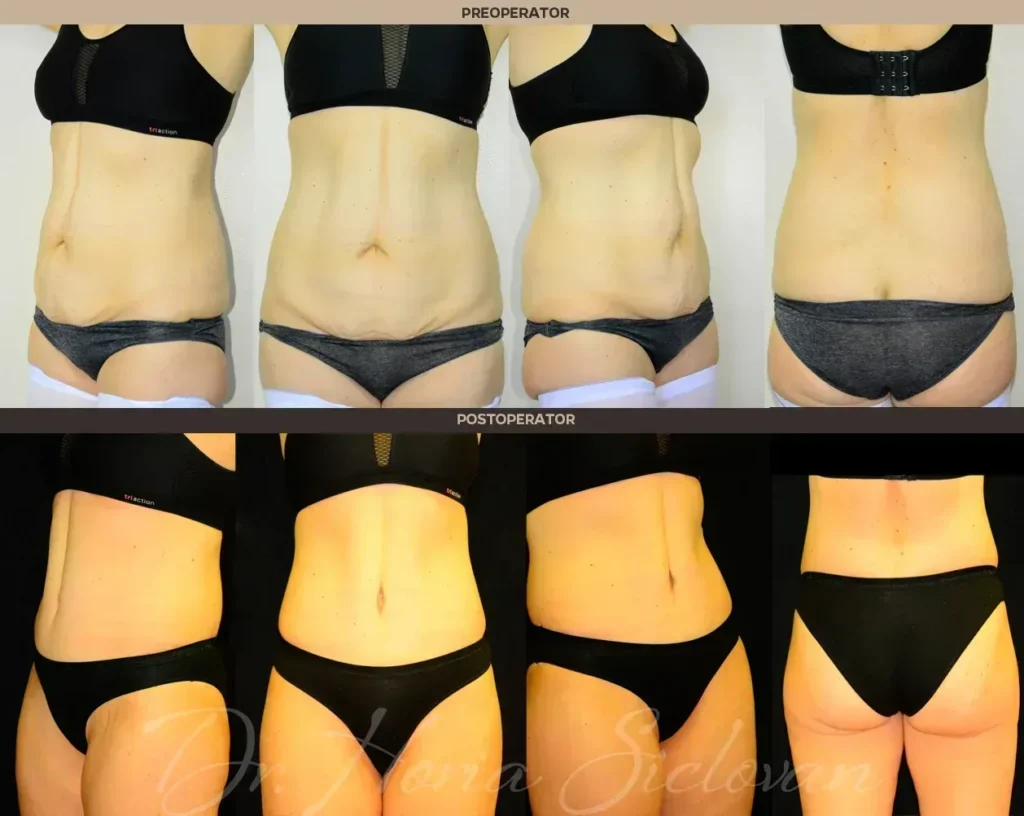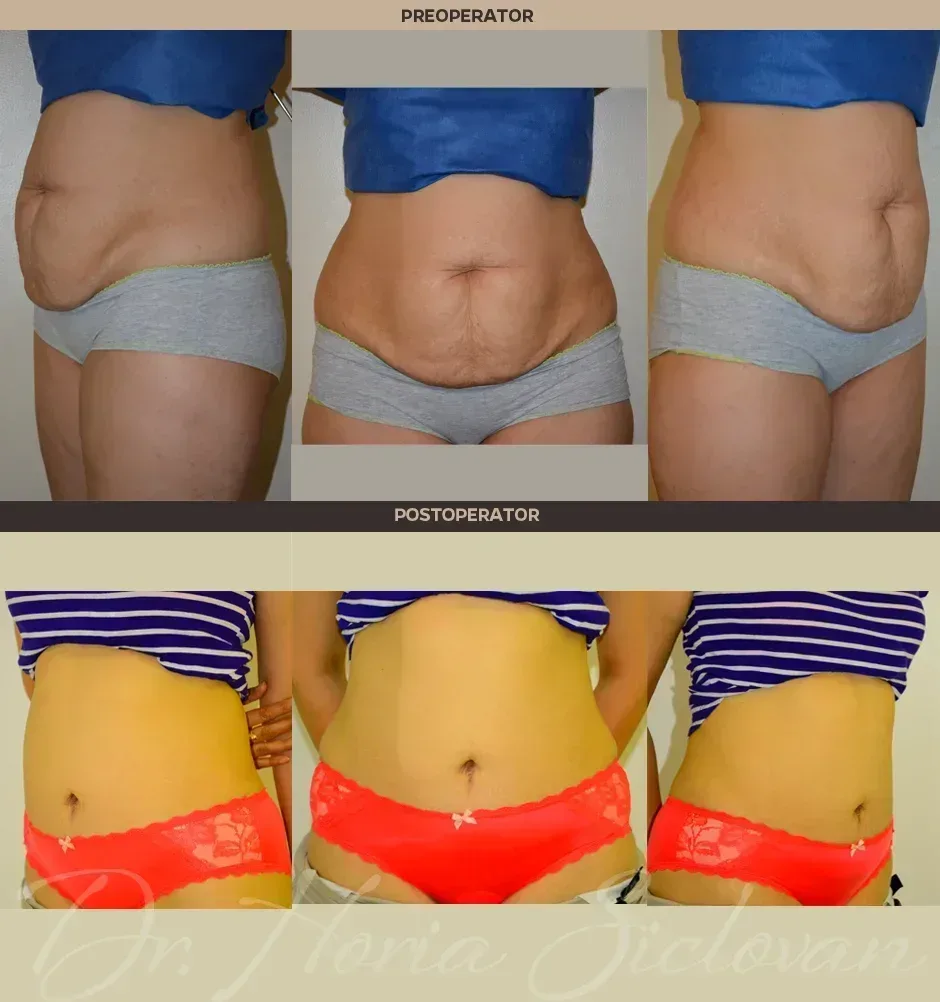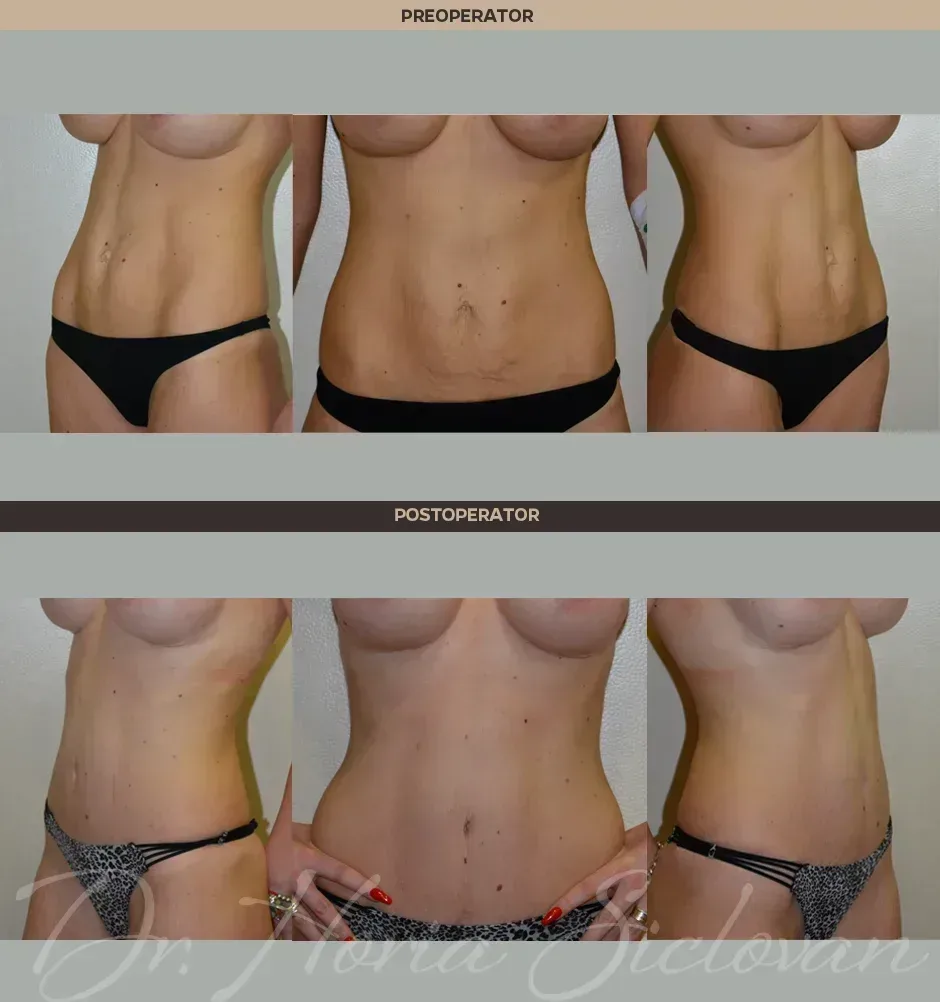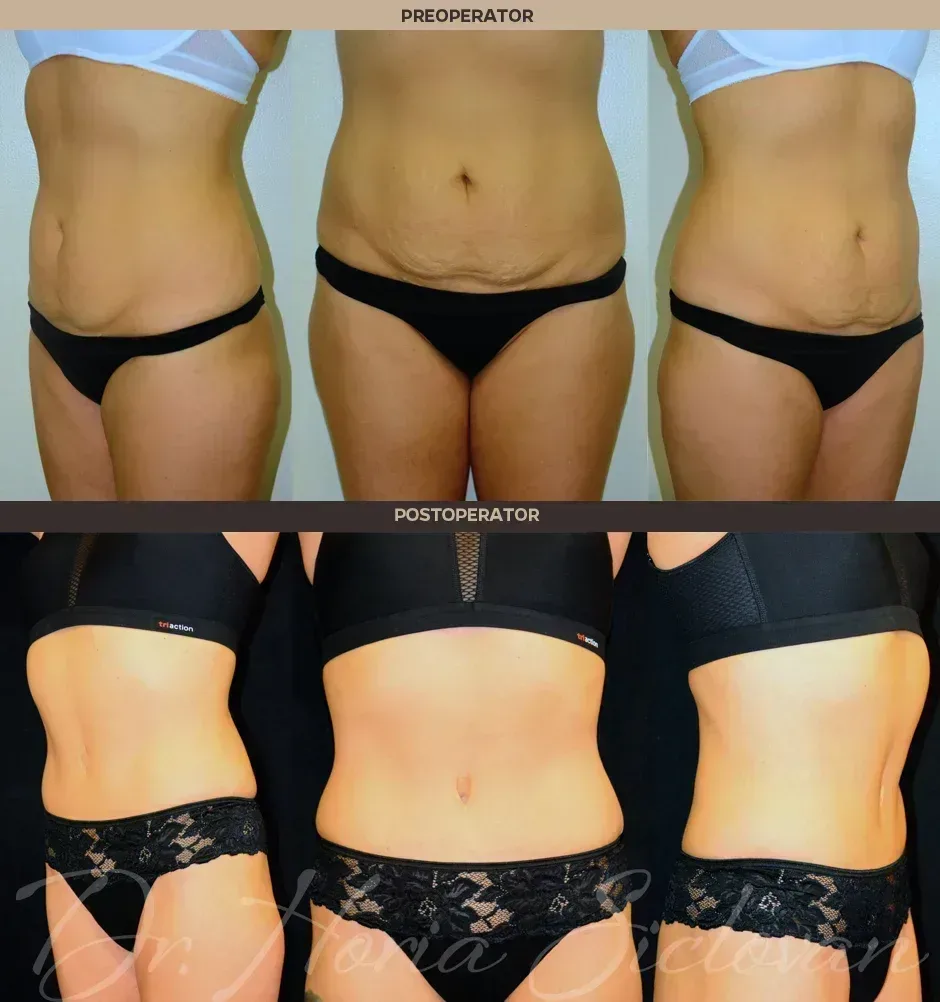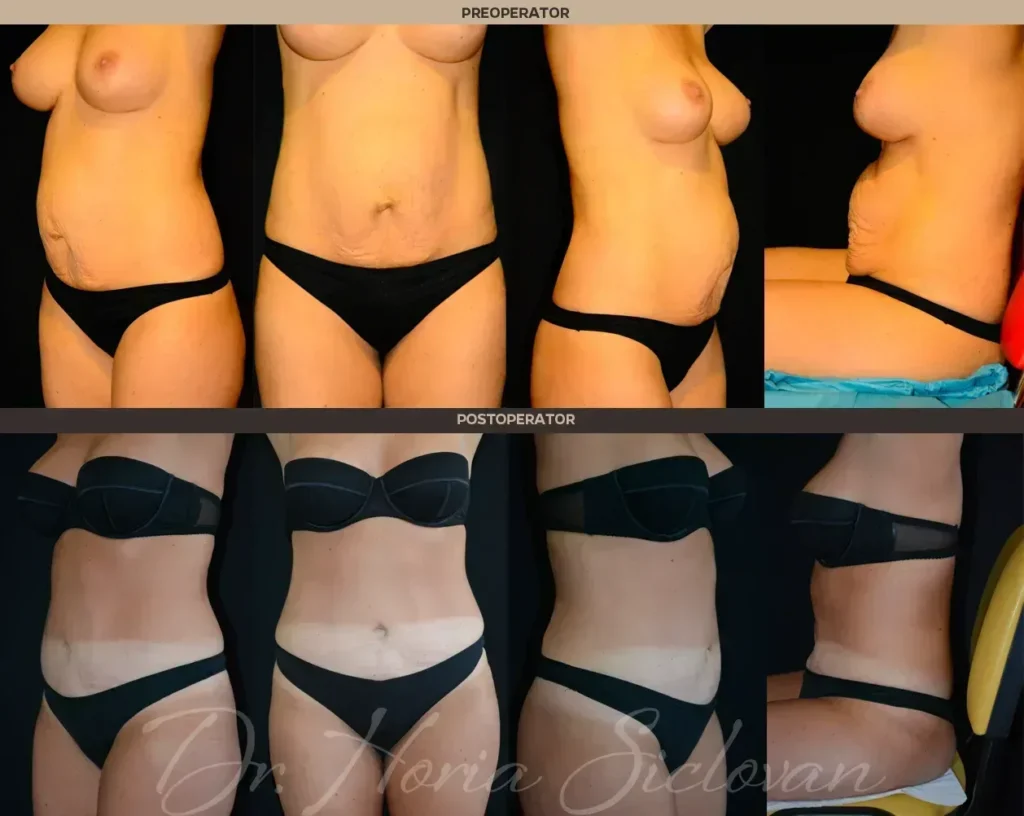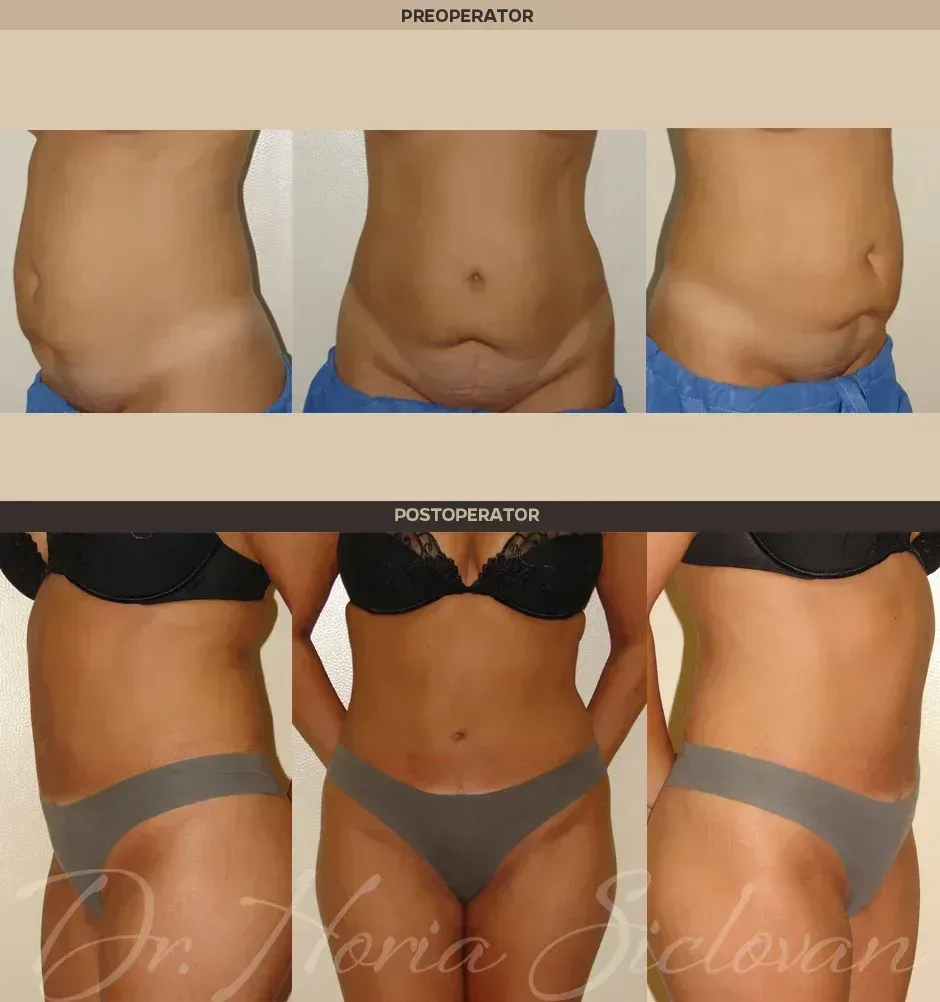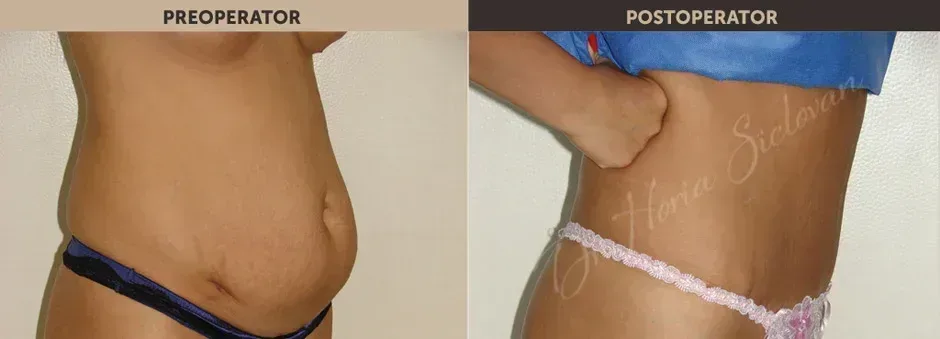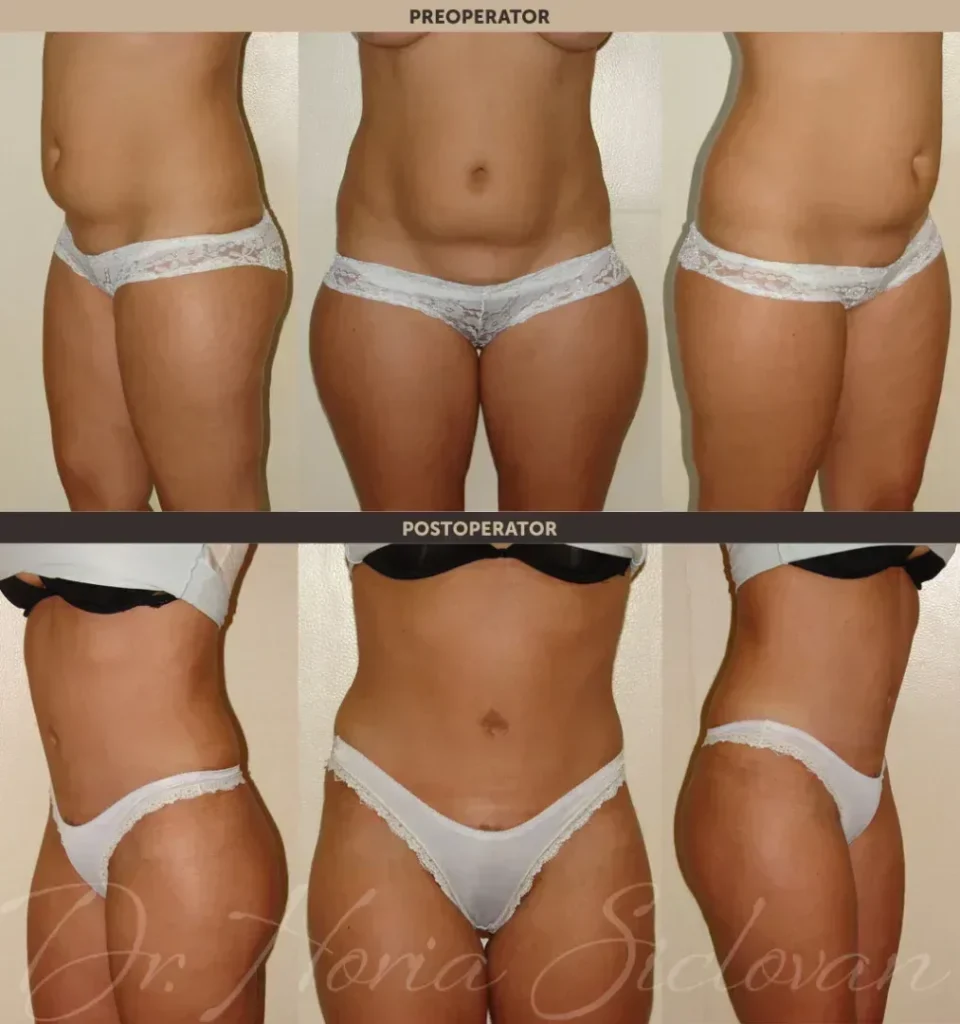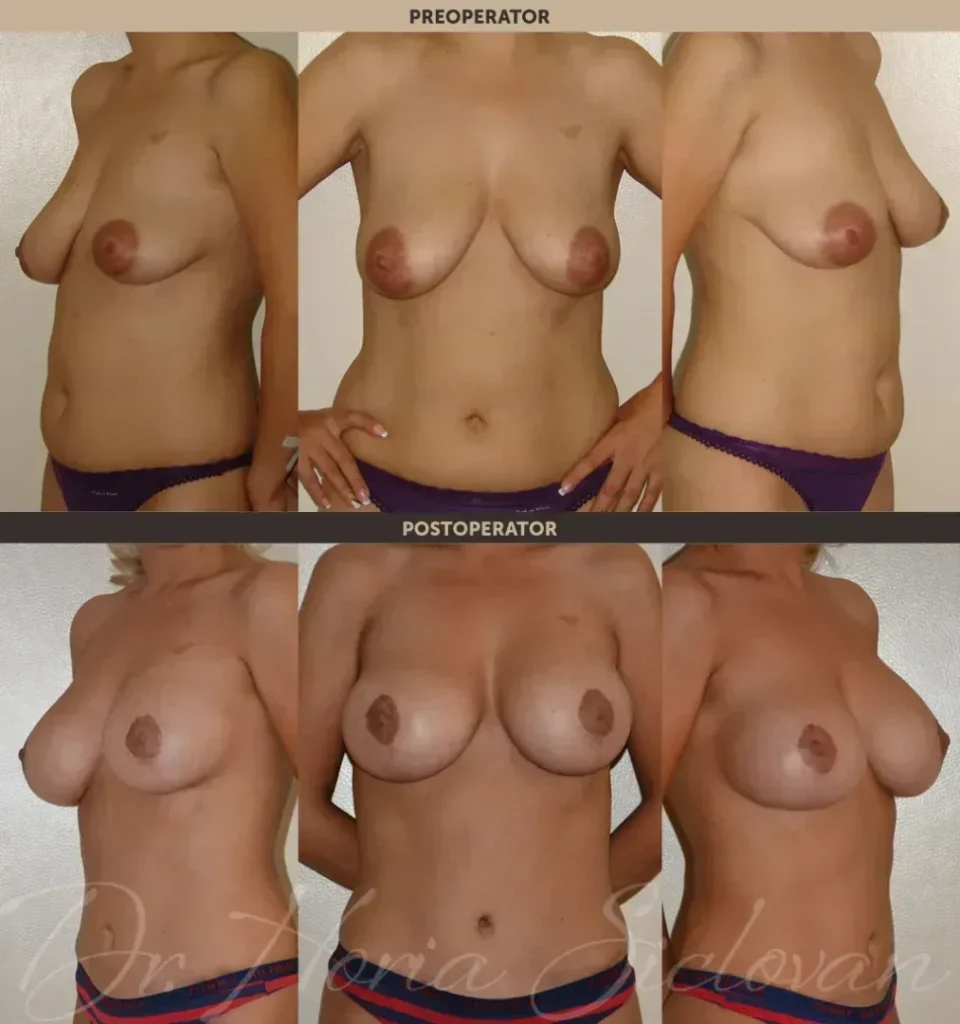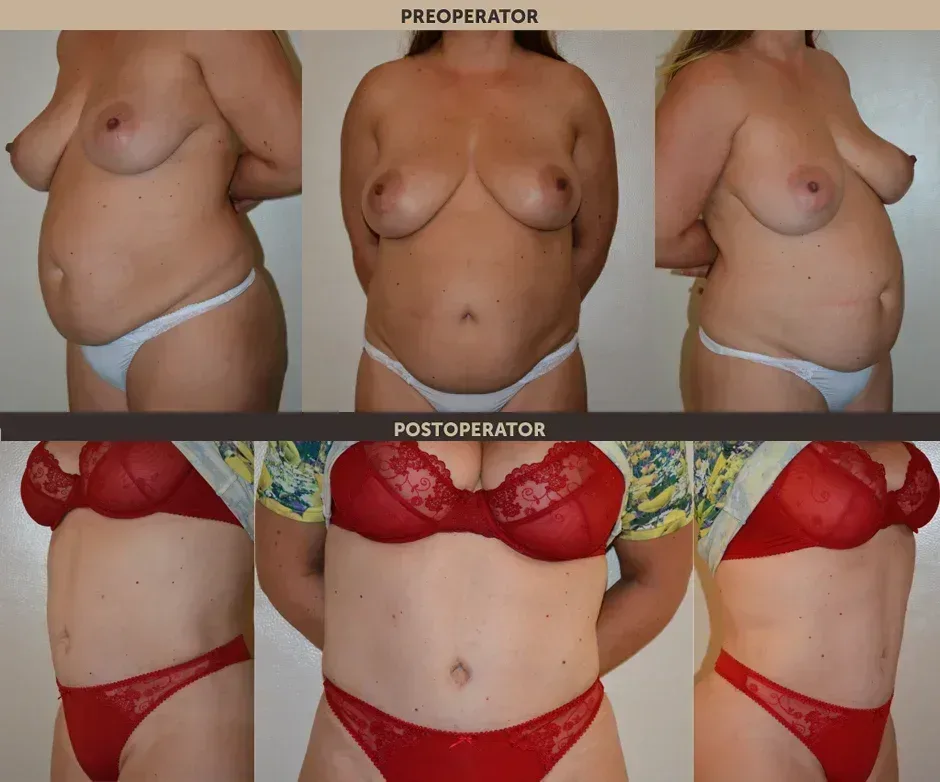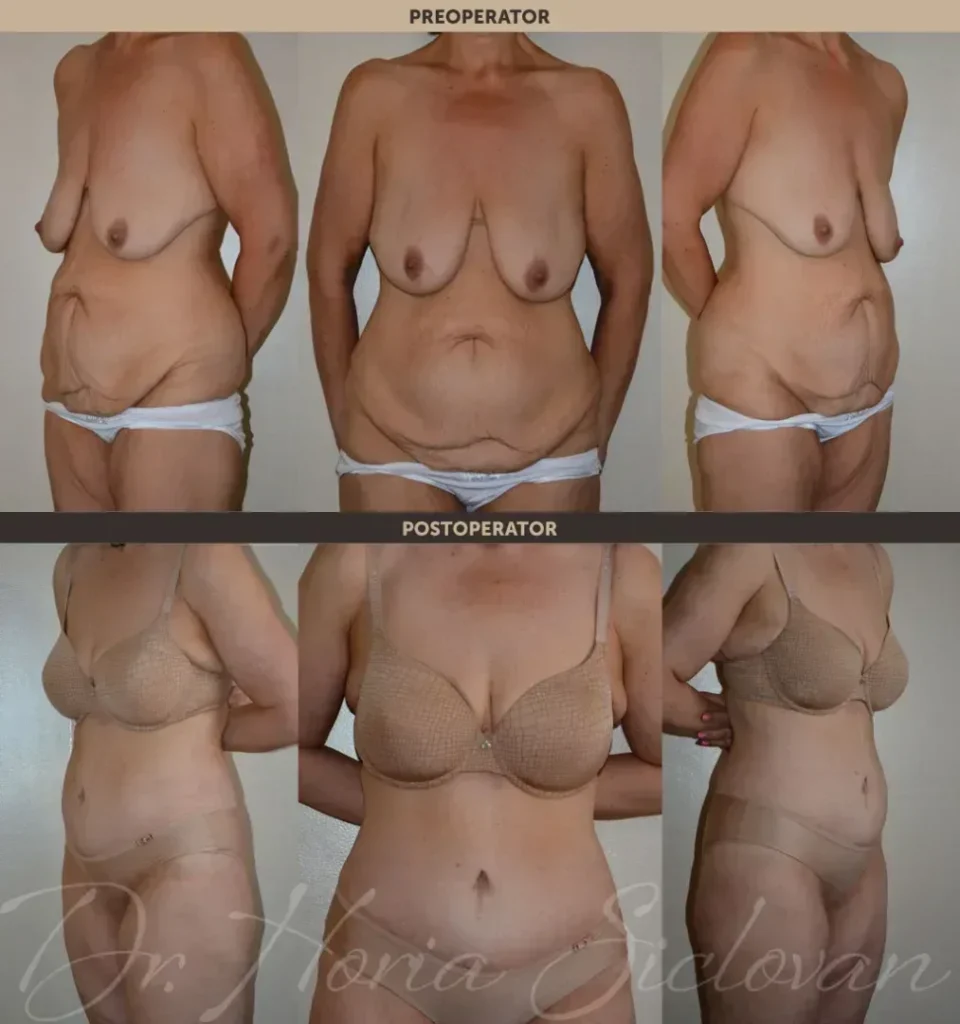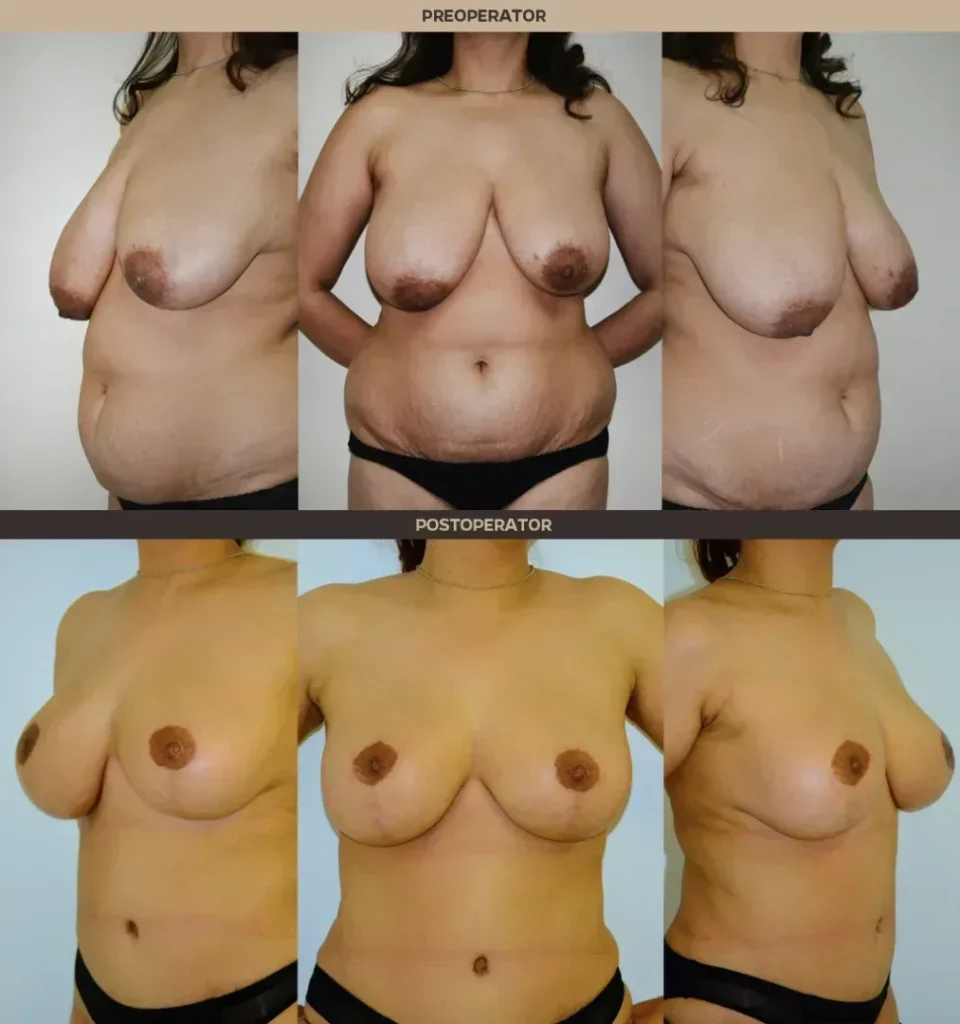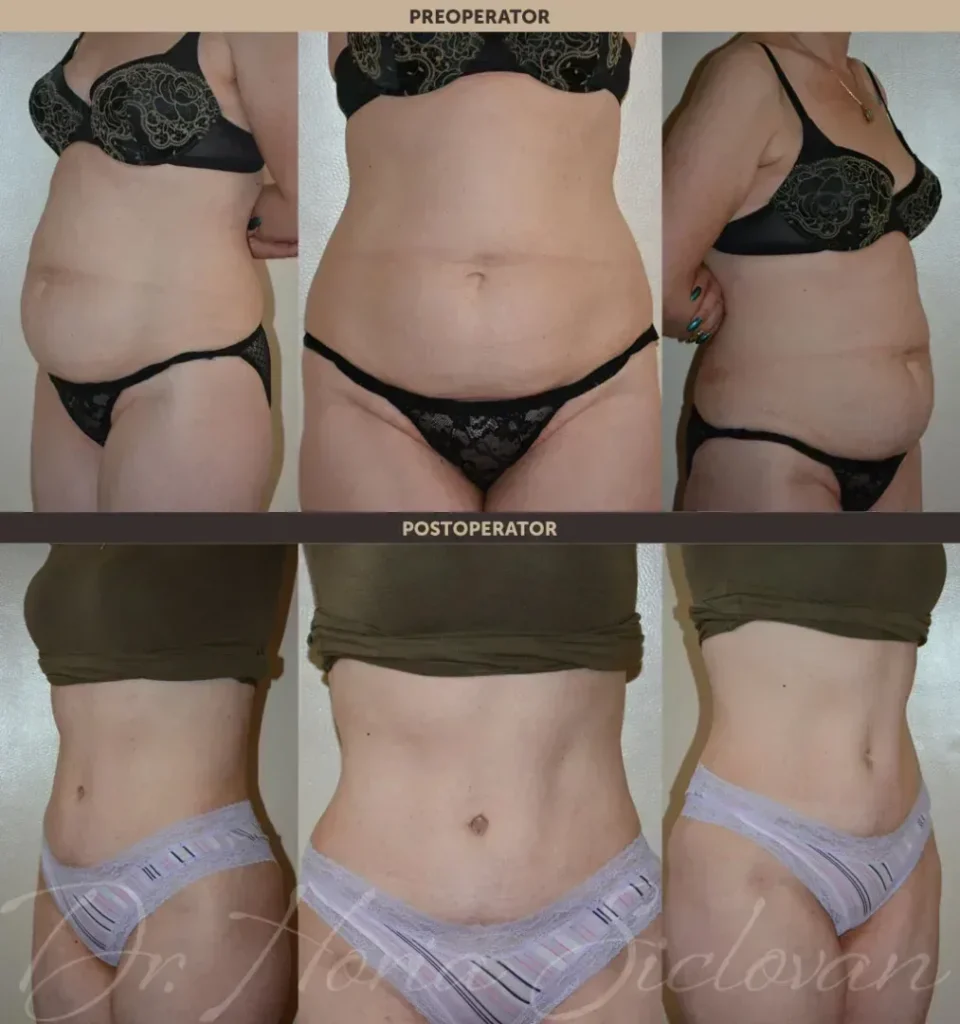Purpose of the Procedure
Abdominoplasty is a surgical procedure that removes excess skin and fat from the abdominal area. The reshaping of the abdominal contour can be achieved through several techniques:
- Only excess fat – removed through liposuction
- Excess skin and fat – excised through abdominoplasty
- Combination of both techniques – lipoabdominoplasty for superior results
In patients with loss of abdominal muscle tone, this is corrected by plication of the musculoaponeurotic wall.
Note: Abdominoplasty/lipoabdominoplasty does not treat obesity and does not substitute diet or exercise. Results are relatively permanent but can be affected by significant weight fluctuations or pregnancy.
Preoperative Consultation
Abdominoplasty/lipoabdominoplasty is indicated for healthy adults with weight close to the ideal. The best candidates are:
- Healthy individuals with no conditions that affect healing
- Non-smokers
- People with a pleasant appearance who wish to improve their body aesthetics
The plastic surgeon must be informed about the patient’s health status, especially:
- Diabetes, hypertension, heart disease
- Previous abdominal surgeries
- Women who have had a cesarean section – the incision will be made at the level of the postoperative scar
Surgical Procedure
Abdominoplasty/lipoabdominoplasty is individualized for each patient, taking into account:
- Excess abdominal fat
- Excess skin (“abdominal apron”)
- Loss of tone of the musculoaponeurotic wall
Superior results are obtained by combining liposuction with abdominoplasty. The procedure does not completely remove stretch marks, but those located in the excised areas will disappear. The length and shape of the incision depend on the amount of skin and fat and the surgical technique used.
Healing
- The incision is dressed, and a compression garment is applied to support the abdominal wall
- The garment is worn for several weeks
- Swelling and local discomfort are normal in the initial phase
- Early gentle mobilization is recommended to avoid complications
- Resuming light physical activities: a few days after surgery
- Initial wound healing: 1–2 weeks, when sutures are removed
- The healing process continues over the following weeks, with reduced swelling and faded scars
Risks
- Hematomas, seromas, infections
- Poor healing of the incision area
- Risks associated with anesthesia
Results
- The result is visible almost immediately, but the final result appears after a few months
- Numbness and tightness gradually improve
- The postoperative scar can be corrected later if necessary
- The abdominal profile is relatively permanent as long as the patient maintains a stable weight and healthy lifestyle










